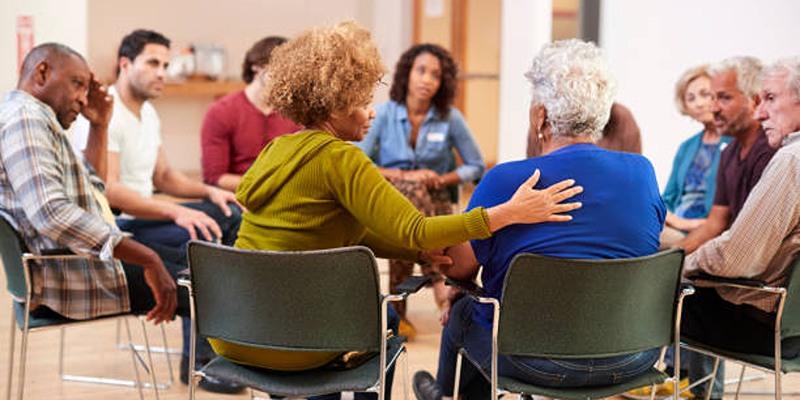Social isolation is one of the tough issues that men and women experience in the present technological society. In large populated areas full of commotion, people do not appear to be connected to the world around them. These feelings can be fought and social relationships can be produced through establishing a good community of people. Based on this research, belonging contributes to more than just the subject’s well-being, but also has positive effects on the quality of his or her life as a result of interaction with people. Below is a list of five tangible suggestions for countering loneliness and building community, each accompanied by tangible tips you can apply now.
1. Participate in Local Activities and Events
 Local events are wonderful chances to make new acquaintances and to create rapport. Children and youths use them to draw, read, exercise, get information, meet new people, and even learn in library functions, artistic, group discussions, or even sports through activities such as art classes, clubs, meetings, games, or exercise. Such activities create a platform on which people with common interests are gathered more often than not hence building strong relationships.
Local events are wonderful chances to make new acquaintances and to create rapport. Children and youths use them to draw, read, exercise, get information, meet new people, and even learn in library functions, artistic, group discussions, or even sports through activities such as art classes, clubs, meetings, games, or exercise. Such activities create a platform on which people with common interests are gathered more often than not hence building strong relationships.
Explore Local Resources
Start by exploring the resources in your area. Check local event boards, community websites, or social media groups for announcements about upcoming gatherings. Whether it’s a casual coffee meetup or a hobby-based workshop, attending these events introduces you to people who share your passions.
Join Hobby Groups
Many towns and cities have hobby-based groups, such as gardening clubs, running groups, or cooking classes. These groups not only provide a platform to enjoy your interests but also encourage interaction and collaboration. By actively participating, you can develop deeper connections with people who value the same things as you do.
Volunteer for a Cause
Volunteering is a powerful way to connect with others while giving back to the community. Local charities and non-profits are always looking for volunteers for events, clean-up drives, or food distribution programs. Sharing these experiences with others fosters camaraderie and helps build a network of like-minded people.
2. Use Technology to Foster Connections
While technology is often blamed for increasing isolation, it can also be a valuable tool for building community when used thoughtfully. Digital platforms provide countless opportunities to find and connect with individuals who share your interests.
Join Online Communities
Online groups and forums dedicated to specific topics can be great starting points. Websites like Meetup or Facebook Groups allow you to find local or virtual communities focused on shared hobbies or goals. Whether it’s a hiking group or a discussion club, these communities help bridge the gap between virtual and in-person interactions.
Attend Virtual Events
If you’re unable to participate in local activities, consider attending virtual events like webinars, online classes, or digital meetups. These platforms provide opportunities to engage with others from the comfort of your home, which can be especially helpful for those with mobility constraints or time limitations.
Host Your Own Virtual Meetup
If you can’t find a group that matches your interests, consider starting your own. For instance, you could organize a weekly video call to discuss books, play games, or share fitness progress. Creating a structured and recurring event can attract participants and build a consistent sense of community.
3. Strengthen and Nurture Existing Relationships
Sometimes, the best way to build a sense of community is to focus on relationships you already have. Strengthening connections with family, friends, and acquaintances can provide a solid support system.
Strengthen Your Bonds with Loved Ones
Reconnect with old friends or distant family members you’ve lost touch with over time. A quick text, phone call, or email can rekindle meaningful relationships. Often, time and distance are the only reasons people drift apart, and taking the first step to reach out can make all the difference.
Organize Intimate Gatherings
Host small gatherings at your home, such as dinner parties, movie nights, or game nights. These events create an intimate atmosphere where guests can interact freely and build stronger bonds. Such gatherings don’t need to be extravagant—what matters most is the shared experience.
Be a Reliable Friend
Strengthening relationships requires effort and reliability. Be available to listen, offer help, and celebrate milestones with your loved ones. By being consistent in your support, you strengthen the trust and depth of these relationships, which contributes to a more connected and meaningful life.
4. Create Shared Experiences
Shared experiences play a crucial role in building lasting relationships. Whether it’s a fun outing or a collaborative project, engaging in activities with others helps foster trust and camaraderie.
Plan Group Outings
Organize activities that involve teamwork and interaction. For example, you could plan a hiking trip, arrange a cooking class, or coordinate a group visit to a museum. These experiences not only create memories but also encourage bonding through shared goals and teamwork.
Collaborate on Projects
Working together on a project—such as a community garden, art installation, or group fitness challenge—provides a sense of accomplishment and strengthens connections. Projects like these require communication, problem-solving, and mutual support, all of which help deepen relationships.
Celebrate Achievements Together
Whether it’s a personal achievement, a birthday, or a holiday, celebrating milestones with others fosters a sense of belonging. Organize celebrations that encourage everyone to participate and share their joy. These gatherings strengthen emotional bonds and make everyone feel valued.
5. Build a Sense of Community in Your Neighborhood
 Your neighborhood is one of the most accessible places to cultivate a sense of community. Building relationships with your neighbors not only combats loneliness but also creates a supportive and friendly environment.
Your neighborhood is one of the most accessible places to cultivate a sense of community. Building relationships with your neighbors not only combats loneliness but also creates a supportive and friendly environment.
Introduce Yourself
If you’ve recently moved or haven’t met your neighbors yet, take the first step by introducing yourself. A friendly smile and a casual conversation can open the door to future interactions and collaborations.
Participate in Neighborhood Initiatives
Join or initiate neighborhood activities, such as a clean-up day, a street fair, or a holiday decoration contest. These events bring residents together for a shared cause, fostering unity and a sense of pride in the community.
Create a Neighborhood Network
Consider starting a group chat or social media page for your neighborhood. This platform can be used to share local news, coordinate events, or simply stay in touch. Having an easily accessible communication channel encourages regular interaction among neighbors.
Conclusion
Creating a community and countering loneliness requires effort and initiative, but the rewards are invaluable. By participating in local activities, leveraging technology, nurturing existing relationships, sharing experiences, and connecting with neighbors, you can build meaningful connections that enrich your life. Each step you take toward building a community helps create a supportive network that makes loneliness a thing of the past. Start small, remain consistent, and watch your sense of belonging grow stronger every day.







